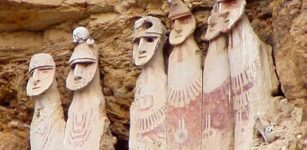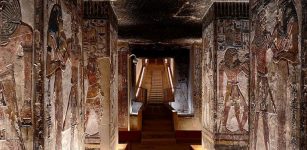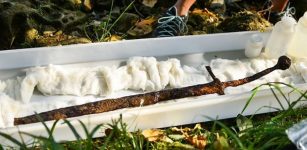Is A Small Obsidian Artifact Linked To Expedition Searching For A Fabled City Of Gold 470 Years Ago?
Conny Waters - AncientPages.com - This modest chunk of obsidian, no more than 5 centimeters in length, was probably found on a rough patch of ranchland in the Texas panhandle.
According to Matthew Boulanger, anthropologist and director of the Archeology Research Collections in SMU’s Dedman College of Humanities and Sciences, this sharp-edged flaked-stone tool was probably left behind by a member of Coronado's expedition.
This journey involved individuals native to Mexico and spanned across regions such as Texas, New Mexico, Arizona, Oklahoma, and Kansas.
Not long after America was discovered, the Spanish believed that deep within this New World were hidden reserves of gold and silver, available in large quantities. Consequently, numerous expeditions were launched in pursuit of these speculated riches.
One such expedition was that of the Spanish explorer Francisco Vasquez de Coronado crossing the plains over 470 years ago on a quest for an elusive city of gold.
A small piece of obsidian, just over 5 centimeters long, likely found on a hard-scrabble piece of ranchland in the Texas panhandle. Image credit: SMU
Boulanger's theory gains credibility from a spectrometer analysis of the blade's chemical makeup, which links it to the Sierra de Pachuca mountain range in Central Mexico.
Boulanger utilized a spectrometer to pinpoint the origin of the obsidian in the Sierra de Pachuca mountain range in Central Mexico. This particular area was known for its extensive use of obsidian for tool production by indigenous people, a practice that continued until the Spanish Conquest.
Map of northern New Mexico and the southern Great Plains depicting the reconstructed paths of the Coronado entrada (1540-1542). Image credit: SMU
This is a region known for its indigenous people who crafted cutting tools from obsidian until they were interrupted by Spanish conquest.
“This small unassuming artifact fits all of the requirements for convincing evidence of a Coronado presence in the Texas panhandle,” said Boulanger, in a press release. “It is the correct form of artifact, it is fully consistent with other finds, the correct material, found in the correct location, and there are no indications of an intentional hoax.”
By tracking the discarded central Mexican obsidian blades, other researchers have successfully mapped the journey of Spanish explorers and Mexico's native people across the present-day United States. Manu obsidian blades usually left behind due to their brittle nature.
The question still remains: how did a blade made of obsidian from Central Mexico find its way to the Texas Panhandle? There are only theories for consideration but there is no concrete evidence to suggest the existence of a trade network connecting the Indigenous peoples of the Texas Panhandle and those living in Central Mexico prior to Spain's conquest of Mexico in the early 1500s.
More information: Charlene Erwin et.al., Central Mexican origin for an obsidian prismatic blade from the Texas Panhandle, Journal of the North Texas Archeological Society (2023).
Written by Conny Waters - AncientPages.com Staff Writer





















